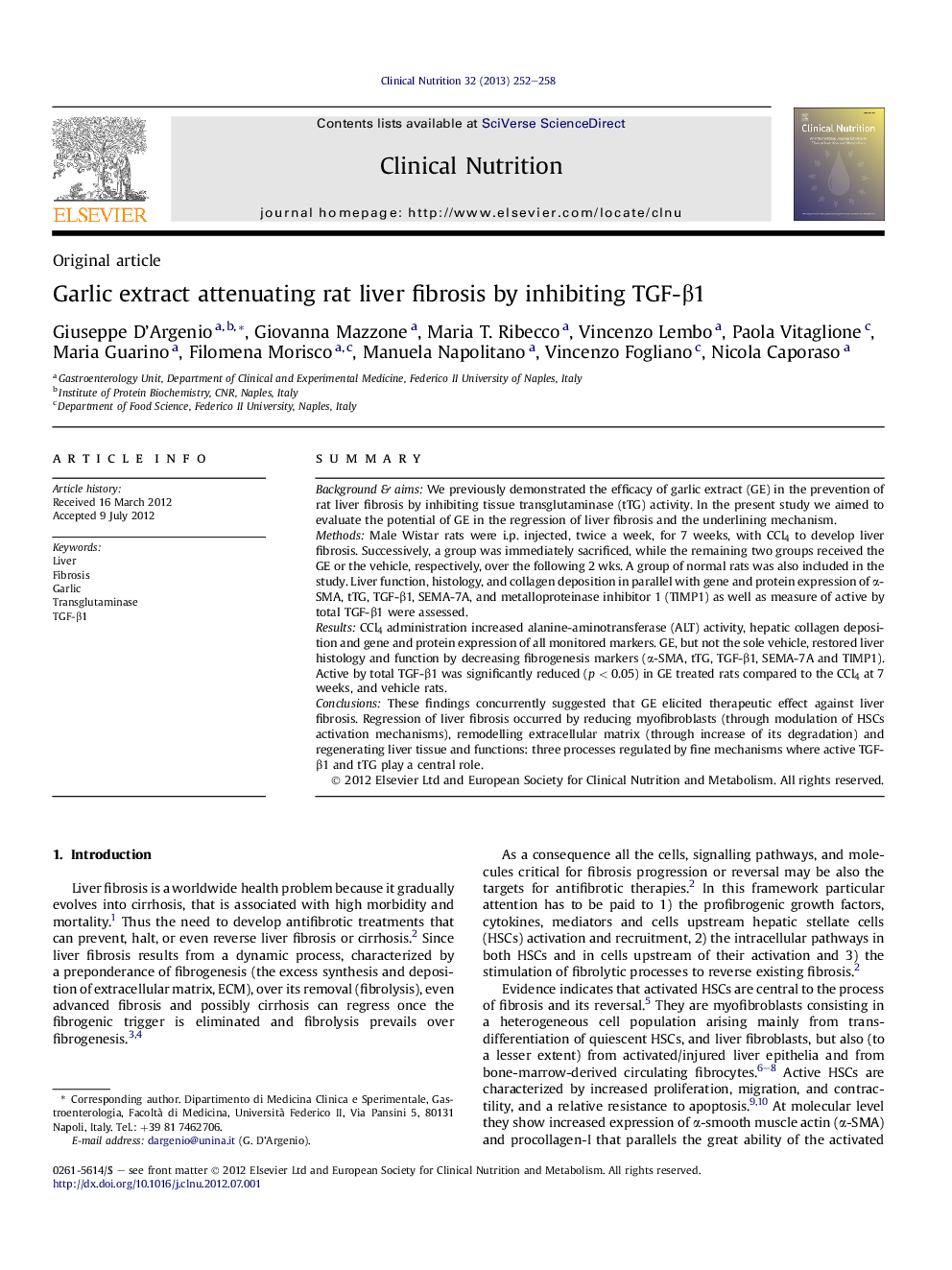| Article ID | Journal | Published Year | Pages | File Type |
|---|---|---|---|---|
| 2689748 | Clinical Nutrition | 2013 | 7 Pages |
SummaryBackground & aimsWe previously demonstrated the efficacy of garlic extract (GE) in the prevention of rat liver fibrosis by inhibiting tissue transglutaminase (tTG) activity. In the present study we aimed to evaluate the potential of GE in the regression of liver fibrosis and the underlining mechanism.MethodsMale Wistar rats were i.p. injected, twice a week, for 7 weeks, with CCl4 to develop liver fibrosis. Successively, a group was immediately sacrificed, while the remaining two groups received the GE or the vehicle, respectively, over the following 2 wks. A group of normal rats was also included in the study. Liver function, histology, and collagen deposition in parallel with gene and protein expression of α-SMA, tTG, TGF-β1, SEMA-7A, and metalloproteinase inhibitor 1 (TIMP1) as well as measure of active by total TGF-β1 were assessed.ResultsCCl4 administration increased alanine-aminotransferase (ALT) activity, hepatic collagen deposition and gene and protein expression of all monitored markers. GE, but not the sole vehicle, restored liver histology and function by decreasing fibrogenesis markers (α-SMA, tTG, TGF-β1, SEMA-7A and TIMP1). Active by total TGF-β1 was significantly reduced (p < 0.05) in GE treated rats compared to the CCl4 at 7 weeks, and vehicle rats.ConclusionsThese findings concurrently suggested that GE elicited therapeutic effect against liver fibrosis. Regression of liver fibrosis occurred by reducing myofibroblasts (through modulation of HSCs activation mechanisms), remodelling extracellular matrix (through increase of its degradation) and regenerating liver tissue and functions: three processes regulated by fine mechanisms where active TGF-β1 and tTG play a central role.
